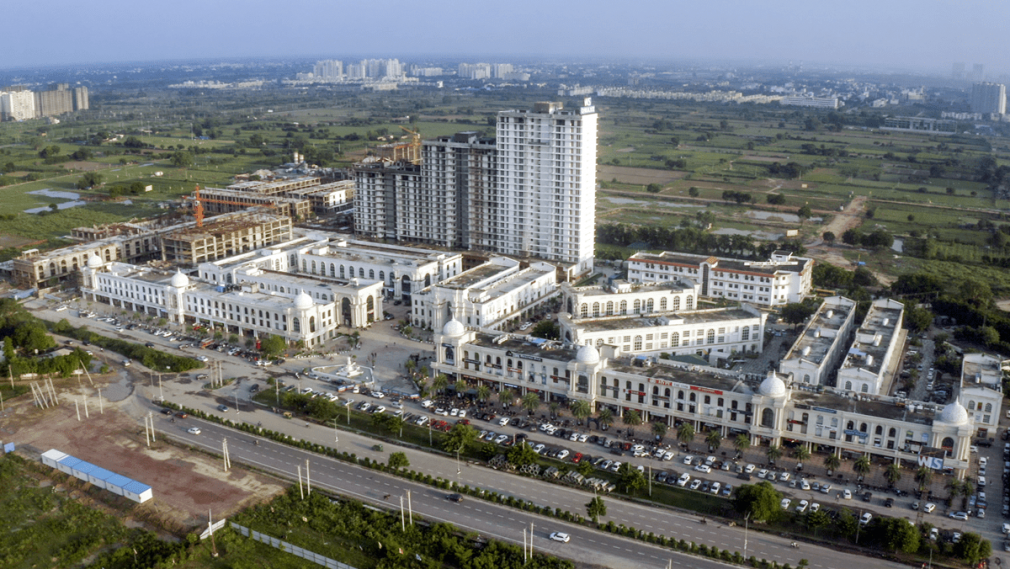The COVID-19 pandemic wreaked havoc on the global economy and India was no exception. Witnessing its lowest ever decline in GDP in Q1 2020-21 (April-June) contracting by 24.4%, the country struggled to save lives and livelihood of its people. In the following quarters, the growth rates remained low. (-)7.3% in Q2 and +0.4% in Q3 with expectation of (-)8% contraction in FY 2020-21.
Every sector of the economy was adversely hit. From manufacturing to mining, to consumer durables to real estate, construction etc. Agriculture sector continued to be the bright spot. Reverse migration played a major role in this. Offices and malls were shut with corporates opting for work from home leading to million of sq. ft. of vacant spaces adding pressure on to the existing inventory in office spaces.
Brands and retailers either left malls/high street or renegotiated the rentals. Residential housing did see some spike with people realising the importance of owing homes. Tier 2/3 towns saw a lot of spike in demand for large sized homes in open environment mainly integrated townships.
According to Savills India, office space absorption across six major cities stood at 27.4 million sq. ft. in 2020 (Jan-Dec), a drop of 51% as compared to the previous year’s absorption of 55.7 million sq. ft.
However, the demand for Indian real estate continues unabated. According to a recent report by Savills India, private equity investment inflows into the Indian real estate sector totalled USD 1.9 billion (INR 135 billion) in Q1 2021. After the pandemic-related slowdown, investors are regaining interest, as the first quarter of 2021 has already seen nearly a third of the investment inflows seen in the entire year of 2020. Despite the rise of the remote-working culture, commercial office assets remained the frontrunner in Q1 2021, accounting for more than half (58%) of all expenditure.
The commercial real estate sector is important because it has a direct impact on the economic cycle. Consumers may need larger spaces to operate from in the long run if social distancing becomes a norm after the second wave. Better security, health, and safety facilities and services are also likely to be demanded. Commercial infrastructure, such as malls and offices, is critical for economic growth. The recent selling of commercial properties indicates that investors and buyers recognize the value of this sector to the well-being of citizens and the economy.
As a result of COVID 19, the commercial real estate sector is looking at an increased investment from NRIs. The rupee’s decline has made investment opportunities for NRIs considerably more lucrative. Real estate investors have turned their attention to commercial real estate, which offers a higher yield and appreciation potential.
Since last year, there has been concern that consumer demands may change due to the fact that offices will not be operational for several months, and even if they are, full staffing may not be available. However, the office segment was the least affected. In fact, the latest analysis by ICRA notes that “In comparison to other segments within the real estate sector, the office leasing segment witnessed the least impact on operational cash flows during FY2021.
Collections from existing leases remained largely intact, with no major challenges observed in the realisation of the rents billed. This was despite the very low proportion of employees returning to the workspaces, with reported employee-occupancy levels between 10-20% at most of the IT and business parks.”
People need offices or commercial establishments, particularly in difficult times, and they must shop for necessities even if they are not allowed to go out in groups. And these requirements are not going to end; the only change would be the demand for larger premises with higher returns.
The second wave of the pandemic may have dented sentiments with occupiers adopting a cautious approach. Net absorption decreased by 33% as compared to Q4 2020, according to JLL. The sentiments in the coming quarters will be based on how quickly India is able to control the spread of COVID and inoculate its population.



2 Comments
Comments are closed.